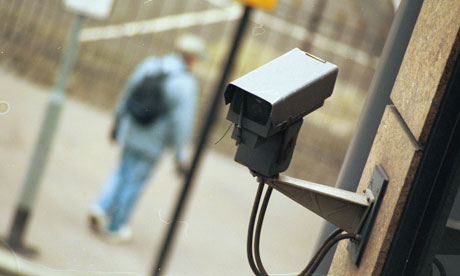 “Should’ve used Snapchat,” a friend of mine tweeted, in response to Anthony Weiner’s latest penile mishap. Snapchat, if you’re unfamiliar, is a smartphone app that allows users to send pictures or videos—often with drawings and annotations—to other users. The messages then self-destruct upon viewing. Discrete, right? It is, in my opinion, the final frontier of human communication. The most non-committal means of conversation possible: everything becomes nothing at once. Nihilism for the tech-savvy.
“Should’ve used Snapchat,” a friend of mine tweeted, in response to Anthony Weiner’s latest penile mishap. Snapchat, if you’re unfamiliar, is a smartphone app that allows users to send pictures or videos—often with drawings and annotations—to other users. The messages then self-destruct upon viewing. Discrete, right? It is, in my opinion, the final frontier of human communication. The most non-committal means of conversation possible: everything becomes nothing at once. Nihilism for the tech-savvy.
It’s easy to guess what’s usually depicted in these snaps: most phones have cameras that point two ways. So if you hold your smartphone at the usual angle, seated, your camera will give you two telling frames. Shot one: your crotch, legs, shoes, and whatever detritus is on the floor. Shot two: the most unflattering self portrait in the world, all bloated under-chin, nostrils and beady eyes. Why take pictures of anything else when it’s so easy to take pictures of ourselves? Of course, this goes beyond Snapchat. Hence Weiner’s weiner. Hence the constant criticism of what’s been dubbed a teenage girl phenomenon, but surely extends to every age group: the self portrait, selfie for short.
In June, when the news broke that the National Security Agency had been tracking us, all of us—reading our emails, scooping up our web data and sifting through it like a giant sandbox, the biggest proverbial brother yet—I shrugged, and went about my life the way I always had. I keep a blog. It’s public. My face is on it. I Snapchat religiously. Sometimes, from the not-privacy of my own home, I even sext. And a few days ago, when the news broke again that the NSA had another, even more insidious way of keeping tabs on the unsuspecting American populace—Xkeyscore—I shrugged again. One breach of privacy is the same as another, if you’re used to it.
I have always been aware that I am being watched. Not in the tinfoil-hat, webcam-covering sense—although one might have a good reason to do the latter—but I’ve never really considered any of my actions, particularly those on the web, private. So I understood that although I was being unusually public, my behavior isn’t all that damning. We’ve all read enough coverage of court cases to know that even your Google search history, that most poetic and private listroll of your life, can be gathered from the ether to damn you another day.
I was never upset about the issue of privacy, but that’s because—for a number of reasons, gender and race included—I never thought I had any privacy to begin with. Roxane Gay wrote of this feeling, days after the leak: “It’s also hard to feel a sense of urgency about this, or a sense of crisis because so many aspects of my life are beyond the realm of privacy and always have been.” Gay writes of being racially profiled while flying and “driving while black;” my own experience as an Asian-American woman is differently nuanced, but not dissimilar.
So what is privacy if you never really thought you had it? What is privacy in an age of surveillance? Let’s face it, most of our lives are far too mundane for the NSA to take notice—unless, of course, you are Muslim, have an Arabic name, email people of the same, or have a poorly-kept browser history of anarcho-terrorist DIY websites. But even Snapchats are retrievable, and an iPhone’s message history can be forever.
Tied up intimately within this conversation is the position of the American body in relation to the Internet. As it has become easier and easier for us to take pictures of ourselves—almost every computer has a built-in webcam, almost every phone has a two-way camera—the ways in which we have constructed privacy and our bodies’ place within it have changed, subtly. Perhaps without even our noticing. Because we take these photos, we believe we have ownership over them. We consider them our property, our inalienable right to share or hide as we please. It is, of course, a false sense of security.
The selfie is, for all that we might dismiss it as a teenage phenomenon, a powerful tool. Just look at the Rolling Stone cover of Dzokhar Tsarnaev, which caused a flood of vitriol to be directed towards the publication. Most of the criticism was centered on how Tsnarnaev seemed to be glamorized: his boyish good looks and come-hither glance a slap in the face and a glorification of violence. But because the photograph of Tsarnaev is actually a selfie—a fact which Rolling Stone, surprisingly, did not publicize—it reveals deeper, more unsettling truths regarding our responses to the cover. We are uncertain of how to judge this boy-child in light of how he represented himself and what he has done. No one directed Tsarnaev to present himself in this way. But: the photograph remains as an artifact. Two things are remarkable about this: first, that a selfie of (one of) the Boston Bombers exists; second, that Rolling Stone, along with a number of other publications, was able to acquire that “private” and “personal” image and use it on the cover of a magazine.
There is something touching and somehow different about a self-portrait, dirty or clean. Weiner’s boner shots have a poignant sadness to them, the sense of a troubled egomaniac seeking love, or at the very least, affirmation. There’s a sense of intimacy to it: of seeing what only one person sees. The face in the mirror, the bulge in the pants. Within the selfie, or the Snapchat, or any kind of photographic communication, there is the sense of privacy, but also transgression. It’s sharing, but it’s also voyeuristic. And the privacy we think we have is a construction: recall PRISM, Xkeyscore, CCTV.
If we don’t have privacy and nothing’s sacred, does that give us freedom to be profane? Profanity will exist as long as we do. But we have made the mistake of thinking that our profanity is within itself sacrosanct—that our sexts will remain private, that our photos of our bodies will remain our own wholly, no matter where we put them.
Why do we continue to leak celebrity nudes, berate Weiner for his sexting problems, and yet continue to do these very same things in our own homes? Do we consider our own lives and bodies sacrosanct as part of the contract we have constructed, unaware of the vast web that our technologies span, and the way that the Internet is constructed? Do we consider our bodies separate, pure, and untouchable entities? How do we treat bodies on the Internet? On the one hand, there is the sense that anything that public must be fair game: but on the other hand, we are outraged when people take our digital artifacts without our consent. We expect that people will “follow the rules,” but are there really any rules?
The blatant lack of privacy in America and the speed with which information technology has developed means we don’t have any codes in effect for how to govern ourselves, or the use of our photos of our bodies. Because nothing’s private, we think we can make everything so. And the pressure falls to our tiny, individual contracts—between the sender and the recipient, between ourselves and a seemingly benevolent Internet. We have to trust, and for the most part, we remain safe, in the illusion of privacy and the overflow of information that defines this era. But we should catch up to how the structures we function within really work. As Anthony Weiner and countless others have found, it’d be foolish to think that anything can ever really be a secret. The question then becomes: How much do we care?
This post may contain affiliate links.







